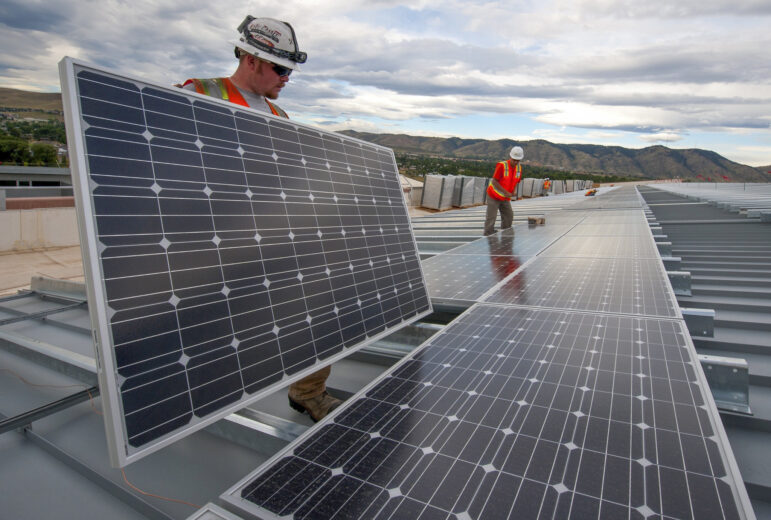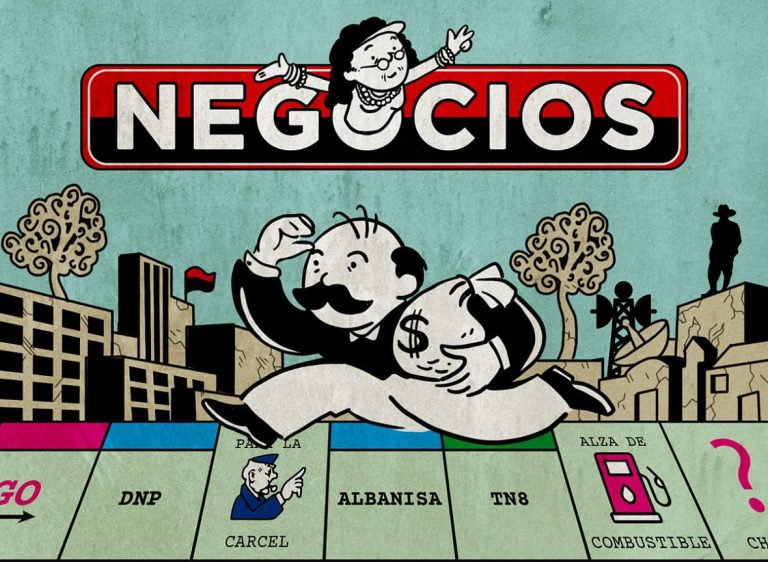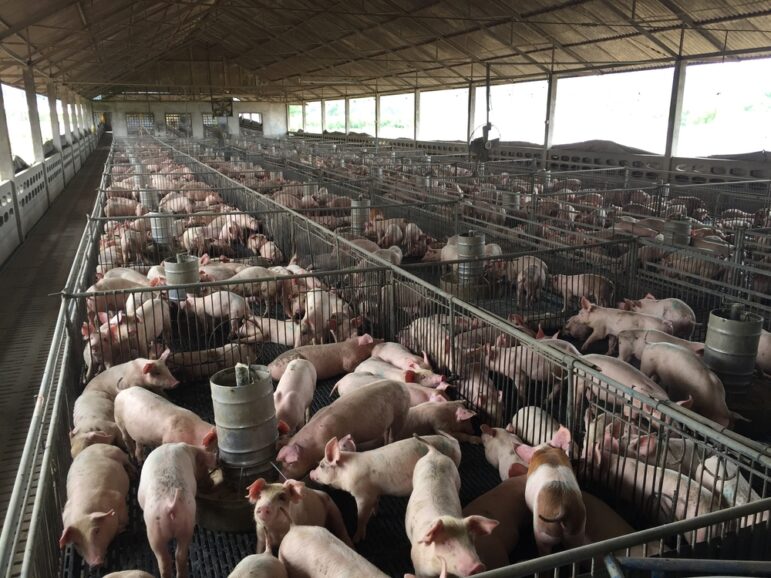

A concentrated solar energy project in Nevada, US. Image: Matjaz Krivic, Creative Commons, via Climate Visuals Countdown
Reporting Guide to Holding Governments Accountable for Climate Change Pledges — Chapter 4: UN Evaluations of Country Pledges
Read this article in
Chapter Guide Resource
Tipsheet: Holding Your Government Accountable for Climate Change Pledges
Chapter Guide Resource
Reporting Guide to Holding Governments Accountable for Climate Change Pledges — Introduction
To find out if a country is — or isn’t — living up to its climate change promises and emissions goals, reporters must first understand what pledges the country has made.
It’s helpful to read the evaluations of country commitments prepared by experts for the United Nations Framework Convention on Climate Change (UNFCCC).
The core document describing each government’s voluntary efforts to fight climate change is known as a Nationally Determined Contribution (NDC), which the UNFCCC defines as “a climate action plan to cut emissions and adapt to climate impacts.” All 194 parties to the Paris Agreement have submitted at least one NDC. (See the list of NDCs on the UNFCCC page.) Or find your country’s documents on the NDC Registry.
These country-level NDC reports serve as a foundational document and the information provided gets evaluated as part of the UNFCCC review process — and the resulting report cards may prove useful for journalists because they show gaps and flaws in national reporting. The promises made in NDCs also can be used by investigative journalists to hold countries accountable for their climate change mitigation efforts. But reporters often need help in understanding the details and consequences of these reports. Keep in mind, too, that the UN evaluators are checking for accuracy of the data, not critiquing national ambition — or the lack thereof.
Reviews for Developed Countries
For developed countries, the UNFCCC Secretariat conducts “technical reviews” involving small “expert review teams” that prepare detailed evaluations of their submitted reports. These review teams are staffed by experts nominated by parties to the UNFCCC and experts from intergovernmental organizations. Their work can include in-country visits.
The resulting reports, which include recommendations, are subject to review by the countries, but then are made public. The texts typically reflect any back-and-forth with the government.
The reports may serve as a useful source of raw material, including a good summary of the government’s plans on climate change. Also included are: names of the experts, dates of the research, background on the standards used, and lists of the documents relied on.
The detailed findings concern the quality of the reporting — with grading for completeness and transparency — and include specific recommendations. Key caveat: the reviewers do not evaluate the policies themselves.
For example, this 2020 report on Hungary found that the information reported “mostly adheres” to the UNFCCC reporting guidelines. Many of the specific comments in the 27-page report concern the quality of reporting. The reviewers said Hungary had provided a list of domestic actions relating to energy efficiency, renewable energy supply and use, and transport that are under development, but did not report their expected mitigation impacts.

An example of a Biennial Report, this one submitted from Hungary to the UNFCCC in 2020. Image: Screenshot, UNFCCC
The reports rate a close read, despite their sometimes dense use of acronyms. Be prepared for tough-to-discern paragraphs — like this one in the Hungary report:
- For 2020, the most significant absolute reductions under the WEM scenario are projected for CO2, CH₄, and N₂O emissions: 31.4, 37.0 and 42.6 per cent between 1990 and 2020, respectively. The pattern of projected emissions reported for 2030 under the same scenario is similar, amounting to projected reductions of 31.8, 38.8 and 40.5 per cent between 1990 and 2030, respectively. For N2O, this means that emissions are expected to increase slightly between 2020 and 2030.
Despite the presence of technical jargon, the reports are useful because the information is digested and summarized. For example, historic data and projections are included in Table 8 of the Hungary report, a “Summary of greenhouse gas emission projections for Hungary.”
In sum, the unheralded reviewers’ reports should be covered when released periodically. Checks could be done on whether the recommendations were followed. Plus the reports are excellent background documents for deeper dives into data issues.
Additional Process Involves Q & A Format
In addition, a Multilateral Assessment is undertaken for each developed country. It begins with an international expert review and then provides an opportunity for countries to question each other. The overall process is known as “international assessment and review.” (Described here.)
The Q & A sessions occur during the annual meetings of the UNFCCC Conference of the Parties. While countries can ask each other questions, observer organizations cannot ask questions. The sessions are open to the public and recorded, however.
During the 2021 meetings in Glasgow, 10 developed countries — Kazakhstan, Croatia, Iceland, Liechtenstein, Luxembourg, Monaco, Poland, Romania, Slovenia, and the United Kingdom — underwent multilateral assessments. Each country presented an overview of their key climate actions and “answered clarifying questions from other countries both in advance of and at the session,” according to a UNFCCC summary.
The fifth and last mutual assessment cycle will be started in 2023. A similar process under the Paris Agreement will begin in 2025-2026 — technical expert reviews and Facilitative Multilateral Consideration of Process (FMCP).

The Paris Agreement, being applauded by the European Parliament after ratification in 2016, includes technical reviews of individual country climate change pledges. Image: Pietro Naj-Oleari, Creative Commons, via Climate Visuals Countdown
Uneven Country Report Quality
Reports by developed countries are more complete than those of developing countries in some cases, according to a comprehensive evaluation by two Finnish researchers. This assessment may provide reporters some insights regarding their own country’s climate change pledges and documentation.
After conducting a detailed examination and scoring of the reports, Romain Weikmans and Antto Vihma of the Finnish Institute of International Affairs found that “reporting on technically complex aspects such as GHG inventories are generally highly adhered to, both by developed and developing country Parties.”
“By contrast,” they said, “developing country Parties struggle with reporting on mitigation actions, and developed country Parties generally lack adherence to reporting requirements linked to achievement of targets.”
Their report, Transparency In Multilateral Climate Governance, published in March 2022, includes country-by-country ratings based on a scoring system they developed. The commentary in their report provides an understanding of country circumstances. For reporters, the scores and commentary in the research by Weikmans and Vihma can help guide an examination of the technical reports.
As they see it, “Significant challenges lie ahead in the implementation of ever more stringent transparency requirements.”
 Toby McIntosh is a senior advisor for GIJN’s Resource Center, which provides online resources to journalists worldwide. He was the editor of FreedomInfo.org, (2010-2017) a nonprofit website based in Washington, D.C. that covers international transparency laws. He was with Bloomberg BNA for 39 years and has filed numerous US Freedom of Information requests and has written about FOI policies worldwide. He is a steering committee member of FOIANet, a network of FOI advocates.
Toby McIntosh is a senior advisor for GIJN’s Resource Center, which provides online resources to journalists worldwide. He was the editor of FreedomInfo.org, (2010-2017) a nonprofit website based in Washington, D.C. that covers international transparency laws. He was with Bloomberg BNA for 39 years and has filed numerous US Freedom of Information requests and has written about FOI policies worldwide. He is a steering committee member of FOIANet, a network of FOI advocates.

















